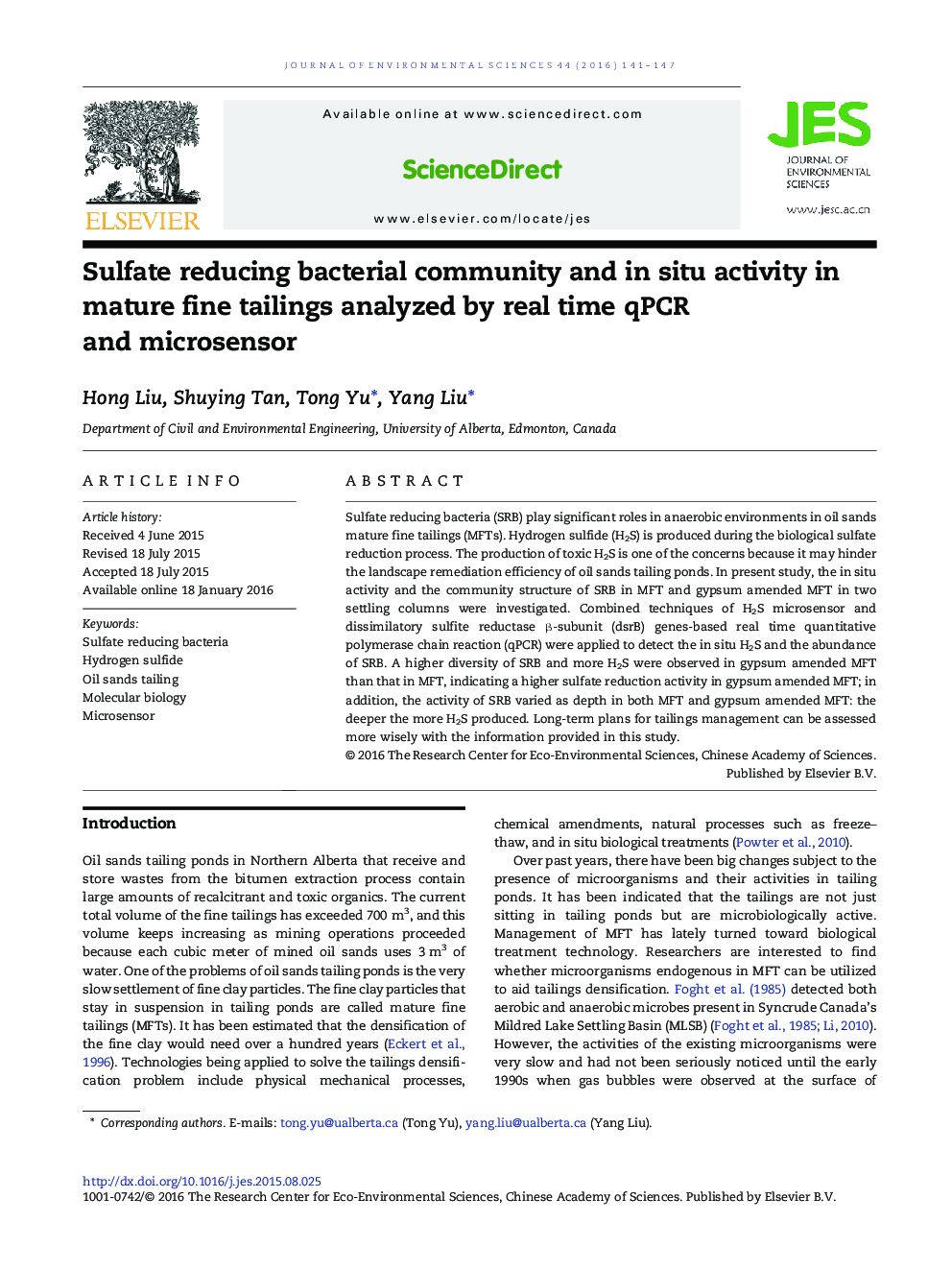| Article ID | Journal | Published Year | Pages | File Type |
|---|---|---|---|---|
| 4453765 | Journal of Environmental Sciences | 2016 | 7 Pages |
Sulfate reducing bacteria (SRB) play significant roles in anaerobic environments in oil sands mature fine tailings (MFTs). Hydrogen sulfide (H2S) is produced during the biological sulfate reduction process. The production of toxic H2S is one of the concerns because it may hinder the landscape remediation efficiency of oil sands tailing ponds. In present study, the in situ activity and the community structure of SRB in MFT and gypsum amended MFT in two settling columns were investigated. Combined techniques of H2S microsensor and dissimilatory sulfite reductase β-subunit (dsrB) genes-based real time quantitative polymerase chain reaction (qPCR) were applied to detect the in situ H2S and the abundance of SRB. A higher diversity of SRB and more H2S were observed in gypsum amended MFT than that in MFT, indicating a higher sulfate reduction activity in gypsum amended MFT; in addition, the activity of SRB varied as depth in both MFT and gypsum amended MFT: the deeper the more H2S produced. Long-term plans for tailings management can be assessed more wisely with the information provided in this study.
Graphical abstractFigure optionsDownload full-size imageDownload as PowerPoint slide
